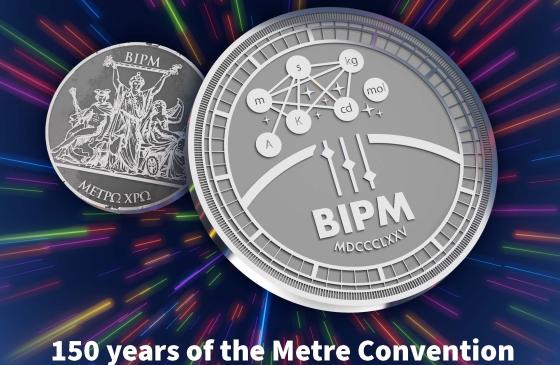OIML BULLETIN - VOLUME LXV - NUMBER 4 - October 2024
e v o l u t i o n s
Measurement Canada’s evaluation of hydrogen blending in natural gas
Arezoo Habibagahi
Senior Science Analyst, Measurement Canada
Innovation, Science and Economic Development Canada / Government of Canada
Measurement Canada is dedicated to maintaining the integrity and accuracy of trade measurement in Canada. It fulfills this mission by enforcing the Weights and Measures Act and the Electricity and Gas Inspection Act (EGIA), along with their respective regulations. However, its mandate does not extend to areas such as traffic regulation, safety, health measurements, or environmental measurements. Instead, its primary focus is on ensuring the accuracy of trade measurements for goods and services.
Measuring and billing natural gas consumption involves a range of technical and metrological considerations. In Canada, gas meters are regulated under the EGIA, which mandates strict metrological requirements, including accuracy in various environmental conditions and mechanical durability, throughout their operational lifespan.
The type evaluation and verification processes for utility meters are crucial to ensure accurate and fair gas charges to consumers, businesses, and industry. Gas meter manufacturers must submit their models for thorough type evaluation assessment by Measurement Canada. Initial verification for most meters, such as diaphragm and rotary types used in residential and commercial settings, occurs before installation to ensure accuracy and reliability. Once installed, periodic reverifications are conducted throughout the service life of the meters. However, for some devices, such as compressed natural gas dispensers, initial verification is performed on-site after installation.
Additionally, Measurement Canada uses statistical methods to evaluate batches of meters, enhancing the overall integrity of the measurement. Consumers have the right to request a Measurement Canada inspection of their gas meters, if they suspect inaccurate metering, ensuring transparency and trust in the system.
The EGIA provides the essential legal framework in Canada for the type evaluation and verification of gas meters, ensuring both ongoing accuracy and fairness in gas measurement. It clearly defines acceptable accuracy tolerances for gas meters, outlining the permissible deviation from actual gas consumption. For gas sales based on volume, energy, or mass, the Act establishes a strict limit of error of ±3 % of the amount of gas supplied.
In 2020, Canada launched the Hydrogen Strategy [1] to position Canada as a global leader in low-carbon hydrogen production, use and export. This initiative outlines a plan that identifies low-carbon hydrogen as a key strategy in achieving Canada’s target of net-zero emissions by 2050. Hydrogen is a versatile energy carrier, produced from various feedstocks including renewable sources, making it a clean and widely available fuel [2].
Blending hydrogen into existing natural gas pipelines and distribution networks presents a cost-effective method to create a cleaner-burning fuel alternative for various applications [3]. This approach enhances energy delivery efficiency and uses existing assets, all the while reducing the carbon intensity of natural gas [4]. Additionally, this approach contributes to the partial decarbonization of sectors that are challenging to electrify. However, additional research is needed to assess how blending effectiveness may vary based on Canada’s pipeline infrastructure and gas meter technology. Currently, only limited quantities of hydrogen have been blended into Canadian gas networks, largely due to the existing standards developed for natural occurring low percentages of hydrogen in natural gas [5]. Prior to updating standards and increasing hydrogen concentrations in blends, it is essential to conduct a thorough evaluation of blending tolerances, metering accuracy, technical and safety standards, and the functionality of end-use equipment. Moreover, the existing regulatory framework governing natural gas cannot be directly applied to pure hydrogen.
The composition of gas mixtures greatly affects pipeline flow rates and pressure levels. Blending hydrogen into high-pressure pipelines can also impact mechanical integrity and shorten the operational lifespan of the pipeline. Furthermore, this blending may compromise the performance and safety of existing end-user gas appliances.
The performance of metering stations hinges on the accuracy required for measuring gas flow, which can be affected by hydrogen blending, dependent on the meter’s design. According to NREL [6], this deviation was deemed acceptable since the recalibration requirement (under 4 %) was met when measuring a gas mixture with less than 50 % hydrogen. Blending hydrogen into gas mixtures alters fluid properties, such as density and viscosity, and increases the speed of sound in the gas, leading to variations in flow rates and turbulence, affecting the performance of gas meters, including ultrasonic flow meters. Consequently, current meters may operate outside their designed range, making it essential to evaluate the stability of meter parts in relation to changing gas characteristics. At high pressures, factors such as permeability and flow characteristics are crucial in evaluating hydrogen’s effects [7]. These issues could cause meters to exceed permissible error limits and create unacceptable blends.
Canada is progressing with hydrogen blending initiatives, as it aims to have over 30 % of its energy supplied by hydrogen, and more than 50 % of its natural gas mix being blended with hydrogen by 2050, using both existing and newly proposed pipeline infrastructures. Hydrogen hubs are emerging in the Provinces of Alberta, Ontario, and British Columbia to connect the supply of low-carbon hydrogen with the demand for it. In the fall of 2021, a major Canadian utility piloted a project to generate hydrogen using an electrolyser, for blending with natural gas and distribution in a region north of Toronto. This pilot is supplying a natural gas blend with 2 % hydrogen to approximately four thousand residential customers. In October 2022, a project in Alberta aimed to supply a natural gas blend with 5 % hydrogen to about two thousand homes. Many other blending or pure hydrogen distribution projects are underway or planned for the near future across the country.
Measurement Canada established the G-25 policy [8] in April 2023, establishing temporary requirements for gas meters used in hydrogen-blending within the natural gas network. This policy applies to meters measuring hydrogen-enriched natural gas supplied to industrial, commercial, and residential users, supporting Canada’s Hydrogen Strategy towards achieving net-zero emissions by 2050. It outlines conditions for meter type evaluation, sampling, and reverification periods, ensuring compliance with the EGIA. Clear regulatory guidelines will be essential to ensure that developing hydrogen blending projects can operate as planned. Currently, TransCanada Pipeline’s minimum heating value of 36 MJ/m³ limits what can be transported in pipelines to hydrogen blends of approximately 5 % by volume [7].
Canada’s national Hydrogen Strategy has taken concrete steps to establish key blending targets, align pilot projects, and research initiatives, and outline tasks and accountability [9]. Clear measurement specifications that support these efforts without inhibiting demonstration programs for blending will offer crucial knowledge and expertise to help regulators develop future standards and regulations for hydrogen and gas infrastructure.
References
- https://natural-resources.canada.ca/climate-change/canadas-green-future/the-hydrogen-strategy/23080
- Conte M, Iacobazzi A, Ronchetti M, Vellone R. Hydrogen economy for a sustainable development: State-of-the-art and technological perspectives. J Power Sources; 2001; 100: 171-87. https://doi.org/10.1016/S0378-7753(01)00893-X.
- Melaina MW, Penev M, Zuboy J. Hydrogen blending in natural gas pipelines. Unites States: N. p., 2015. https://doi.org/10.1002/9781118991978.hces205.
- Noussan M, Raimondi PP, Scita R, Hafner M. The role of green and blue hydrogen in the energy transition - a technological and geopolitical perspective. Sustain Times; 2021; 13:
1-26. https://doi.org/10.3390/su13010298. - Yoo Y, Glass N, Baker R. Review of hydrogen tolerance of key Power-to-Gas (P2G) components and systems in Canada. NRC Publications Archive; 2017. https://doi.org/10.4224/23002611.
- Melaina MW, Antonia O, Penev M. Blending Hydrogen into Natural Gas Pipeline Networks: A Review of Key Issues. NREL Technical Report; 2013; 5600-51995. https://www.nrel.gov/docs/fy13osti/51995.pdf
- Fujiwara H, Ono H, Ohyama K, Kasai M, Kaneko F, Nishimura S. Hydrogen permeation under high pressure conditions and the destruction of exposed polyethylene-property of polymeric materials for high-pressure hydrogen devices (2)-. International Journal of Hydrogen Energy; 2021; 46(21): 11832-11848. https://doi.org/10.1016/j.ijhydene.2020.12.223.
- https://ised-isde.canada.ca/site/measurement-canada/en/node/676
- https://natural-resources.canada.ca/climate-change/canadas-green-future/the-hydrogen-strategy/hydrogen-strategy-for-canada-progress-report/25678






